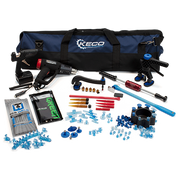
Staying Competitive in Today’s Body Shop
The automotive industry has changed dramatically in the past 40+ years. Cars and trucks today have features few would have dreamed of in the 1970’s or ‘80s. Electronics alone are a huge innovation but we have also seen plastic body parts, alternative metals in OEM manufacturing such as aluminum, and all-out efforts in body shapes and weights geared towards better fuel economy and greater safety.
Body repair shops today have to take into consideration these changes, especially with body panels and other body parts: they are no longer just pieces of metal. In addition to body parts being manufactured out of plastic, tempered steel, steel, aluminum or composites, techs have to be aware of insulation and wiring on the back, sensors, and e-coatings on the front.
Techniques have changed, too. Technicians routinely pounded out dents in the past or used stud welding to pull the dent. PDR offered a specialty type of repair many shops farmed out. All of this comes down to traditional shops versus new OEM manufacturing techniques – and what to do about it.
Most Body Shops
The majority of people in our business operate smaller, “mom and pop” shops. These body shops are often family-run businesses that are not necessarily on the cutting edge of technology, but they have their main customers, some who have been loyal for decades and who help keep the shop afloat financially. Mom and pop repair facilities don’t do the volume business-wise compared to regionals or large MSO’s, and like most shops, the owners and managers battle insurance adjusters daily. Naturally, their main focus is body repair so they are not necessarily super negotiators, estimators, or accountants.
To stay competitive and remain in business, owners of family-run shops think that they might have to expand their capabilities by enlarging the shop with new work areas so they can accept more customers, or create separate bays to accommodate different metals. Or maybe hire more people or invest in a major advertising campaign. None of these are cheap.
So how does a shop like this stay competitive in the face of competition and new technology without making huge, business-altering investments?
KECO and GPR
In the early 2000s, technicians began using GPR (glue pull repair) to repair dents and collision damage. Since that time, KECO has moved to the forefront of this technology and is now the premier manufacturer and supplier of GPR tools and accessories.
GPR is not rocket science. Techs use removable adhesive and an attachment called a tab to pull the dent from the front with a pulling tool. Most of the time, GPR creates little paint and finish damage. Actually pulling the dent is similar to traditional dent pulls, so technicians do not expend any more energy and they can use their present pull tools with minor adapters if they choose. But some of the best aspects of GPR are that there is no stud welding, with the accompanying invasive damage that they must be repaired, and GPR works on all metals, steel, tempered, steel or aluminum so there’s no need for separate work areas. This gives body shops a way to make dent and collision repairs quicker and easier and with relatively small financial investment. GPR is a way for small, family-owned body repair shops to remain competitive and at the same time address new technology to improve their profit margins.
Other Advantages of GPR
If a shop is moving into the future by looking at turning over the business to a son or daughter, or perhaps considering selling to a large MSO or a smaller regional competitor or another business owner looking to expand to additional locations within his own market, including GPR in the shop can make it more attractive to progeny or a potential buyer. KECO’s GPR tools and training are affordable options that make the shop able to repair more vehicles, replace fewer parts, and increase efficiency because technicians can do more work with less effort. Combined, these advantages make the shop more attractive to a potential buyer or for handing it down to the next generation.
Tools and Training
KECO’s kits are a great way to begin learning and performing GPR. All kits include the tools a technician needs to either start small in GPR, add on to existing GPR tools that you may already have, or to get all the tools and accessories needed to become super proficient in GPR. The starter kits include a glue gun and various tabs and adhesives for different applications. In addition to these basics, the bigger kits include a larger variety of adhesives and tabs, lights, more repair tools, lifters, and a carrying bag.
Along with ordering a KECO kit, training can be an additional economical method to address a body shop’s financial concerns and considerations. KECO’s free online training is a great way to learn GPR quickly and to become familiar with the tabs, adhesives, and tools involved. Techs new to GPR can use web training as their primary training tool; more experienced technicians can use it for troubleshooting or tweaking their skills and knowledge after taking advanced courses.
On-location classes are for medium to large shops that would like to train three or more technicians with a dedicated hands-on experience combined with personal instruction. On-location training has the additional advantage of working in the familiarity of your techs’ shop. In the classes, technicians often work on customer vehicles, which means less downtime.
We also offer regional training for shops that want in-depth GPR instruction but don’t have enough techs on staff to justify the cost of an on-location class. KECO hosts these events whenever there is enough interest generated in a particular area.
Small Investments = Bigger Profits
KECO is in the business of helping body shops increase their returns. We offer a line of GPR tools and accessories at reasonable costs that allow technicians to work better and more efficiently, yielding fantastic results without invasive stud welding and labor-intensive priming, painting, and finishing. Increased efficiencies and abilities mean the shop can serve more customers in less time, with the accompanying bigger profits. Bigger profits make your shop more financially secure, whether the goal is to get ahead of the competition, to hand down a thriving business to the next generation, or to appear more attractive to a prospective buyer.
Training certainly involves time but it is time well spent. Our instructors share their knowledge and experience with your technicians so they assimilate GPR quickly and thoroughly. We make it easy to learn on your own via our online training materials on www.pulltopaint.com.
Great tools, the right accessories, and expert GPR training gives repair shops the advantage they are looking for. Contact KECO now to start making better repairs and stop stud welding.


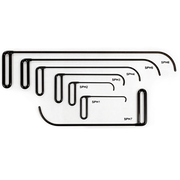
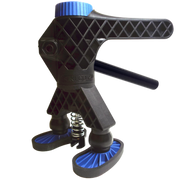
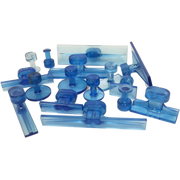
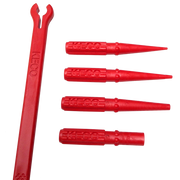
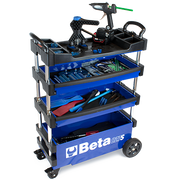
Leave a comment